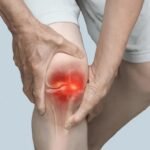PRP or platelet-rich plasma injections are becoming famous for relieving pain, especially in conditions like elbow discomfort and knee arthritis. PRP offers a non-surgical treatment alternative for those seeking relief using the body’s natural healing processes.
What Are PRP Injections?
PRP injections, or platelet-rich plasma injections, use a patient’s blood to promote healing in tissues and joints, offering an innovative approach to managing sports injuries, chronic pain, and conditions like osteoarthritis. This procedure involves drawing blood, processing it to isolate growth factors, and injecting the concentrated solution into the injured area to enhance recovery. PRP therapy is particularly effective for tendon injuries, ligament sprains, and arthritis pain, as it stimulates tissue repair and regeneration. For many, it provides a non-surgical option that speeds healing and supports returning to daily activities.
How Are PRP Injections Administered?
PRP injections involve a careful process that starts with drawing a small blood sample from the patient, then processed in a centrifuge to separate the platelets and growth factors needed for healing. The blood is spun to create a concentrated solution that will be used for the injection. Before the procedure, patients may be advised to avoid certain medications to ensure the best results. Once the PRP is prepared, it is injected directly into the affected area, usually with the help of local anesthesia, to reduce discomfort. The entire process takes around 30 minutes, and while some swelling or mild discomfort may follow, most patients recover quickly with proper aftercare. This treatment supports the body’s natural healing process, offering a non-surgical option for pain relief and recovery.
What Can PRP Injections Help Treat?
PRP injections are a versatile treatment option for managing sports injuries, chronic pain, and joint conditions like osteoarthritis, making them valuable in regenerative medicine. For those dealing with elbow pain, especially conditions like tennis elbow, PRP injections can offer significant relief. This therapy taps into the body’s natural healing abilities by delivering concentrated platelets to the injured area, reducing inflammation and promoting recovery. Many patients experience reduced discomfort and a quicker return to normal activities than traditional surgical options, making PRP a minimally invasive and effective solution for long-term relief and improved quality of life.
What to Expect Before PRP Injections?
Before undergoing PRP injections, patients will have a detailed consultation to discuss their medical history, the procedure, and necessary precautions to ensure the best results. It’s important to avoid certain medications, such as corticosteroids, NSAIDs, and blood thinners, in the days leading up to the treatment, as these can interfere with the healing process. A thorough health evaluation will also rule out any conditions affecting the outcome. While PRP injections are generally safe, possible side effects include localized pain, swelling, and, in rare cases, infection. Open communication with your healthcare provider is key to managing risks and ensuring a smooth recovery. Regular follow-ups help monitor progress and address concerns, leading to a practical and personalized healing experience.
What to Expect After PRP Injections?
After receiving PRP injections, patients will follow a structured recovery process focused on rest, gradual rehabilitation, and pain management. Initially, a rest period lasting a few days to a week helps minimize stress on the treated area. Physical therapy usually begins a few weeks later with gentle movements to promote healing. Pain management strategies, such as applying ice and taking prescribed medications, help ensure comfort during this phase. Recovery progress is monitored through regular follow-ups, with full rehabilitation taking several weeks to months, depending on the individual. Results from PRP therapy typically start showing within a few weeks as the body begins to heal. However, outcomes may vary based on factors like the severity of the injury, overall health, and adherence to post-care instructions. After the injection, patients should avoid strenuous activities and gradually return to movement while maintaining regular communication with healthcare providers to ensure a smooth recovery.
How Many PRP Injections Are Needed for Elbow Pain?
The number of PRP injections required for elbow pain typically ranges from two to three, depending on the severity of the condition and individual healing responses. Factors such as age, overall health, and the body’s natural ability to repair itself play a role in determining how many treatments are necessary. Older patients or those with pre-existing conditions like osteoarthritis may need more injections for effective pain relief. Additionally, the techniques and concentration of the platelet-rich plasma used can influence recovery times. By considering these factors, patients can set realistic expectations and work with healthcare providers to create a personalized treatment plan that maximizes their recovery.
Are PRP Injections Covered by Insurance?
Whether PRP injections are covered by insurance depends on the patient’s specific policy and the medical necessity determined by healthcare providers, particularly for chronic pain or inflammation. Patients must verify coverage before proceeding with treatment. To make informed decisions, patients should discuss the procedure with their healthcare provider, such as Surgery Consultants of Florida, to understand its medical benefits, review their insurance policy for coverage details and authorization requirements, and ask about any out-of-pocket costs like deductibles or co-pays. These steps help clarify financial responsibilities and ensure smoother access to treatment, especially for athletes seeking relief.
Conclusion
In conclusion, PRP therapy, particularly platelet-rich plasma, offers a promising option in regenerative medicine for treating various conditions like sports injuries, chronic pain, and osteoarthritis. PRP has shown effectiveness in post-surgical recovery and joint health improvement by harnessing the body’s natural healing processes. This less invasive approach appeals to those seeking alternatives to traditional treatments, especially in sports medicine. As PRP therapy continues to evolve, patients and healthcare providers must stay informed about its benefits and advancements, ensuring its role in comprehensive care and pain management.







